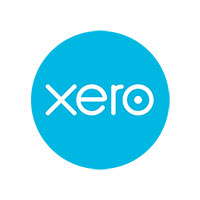
Going back to 1982, we have had Autumn Statements, which for a few years under Kenneth Clarke became Summer Statements, before returning once more to the autumn under Gordon Brown, when it was renamed the Pre-Budget Report and then back to the Autumn Statement under George Osborne. Now to mark changed times, the Autumn Statement is to be abolished, except it isn’t. The Spring Budget will be abolished and moved to the Autumn, with a Spring Statement in March. Except for next year, when we will have two budgets in the spring and in the autumn. After all this is what people voted for in the referendum.
Mr Hammond’s reputation is that he reads spreadsheets for enjoyment. In common with his predecessors, he started with lists of figures for GDP growth and borrowing. However, at one point he told MPs ‘It’s complicated, but it’s good news’ in order to spare them from reciting all the detail. As usual, there were references in the speech to matters that were covered in more depth in the documents released on the internet when he sat down. This report explains the more significant announcements on tax, and also includes a reminder of some of the measures that are coming into effect in the near future after having been announced some time ago.
The background to this statement is, of course, the decision to leave the EU. Mr Hammond laid out what this means for borrowing and, so the Government’s ‘fiscal rules’. He now aims to bring the public finances into balance in the next Parliament, not by the end of this one.
For more information please call us.
Personal taxation
Allowances and rates
The Chancellor confirmed the income tax allowances and rates for next year that were announced at Budget 2016: the main tax-free personal allowance will be £11,500, and the threshold for 40% tax will be £45,000. Other allowances and rates are set out in the tax rate tables accompanying this document. The Chancellor also confirmed the Government’s intention to raise the personal allowance to £12,500, and the 40% threshold to £50,000, by the end of this Parliament.
National Insurance Contributions
From 6 April 2017, the National Insurance thresholds for employers and employees are to be made consistent at £157 per week (they are currently £1 apart at £155 for employees, £156 for employers). Failing to increase the employers’ threshold by the usual amount will increase the amount payable, but unifying the amounts should simplify administration.
Class 2 NIC are to be abolished from April 2018. As some benefit entitlements are dependent on these contributions, self-employed people will need to consider how they will continue to qualify. The Chancellor said that this could be achieved through paying Class 4 NIC on profits or voluntary Class 3 contributions (which are substantially more at present than Class 2 NIC).
From April 2018, the Government will remove NIC from the effects of the Limitation Act. This will align the time limits and recovery process for enforcing NIC debts with other taxes, and appears to be related to measures to collect tax on loans made in the past to beneficiaries of employee benefit trusts.
Additional income allowances
As previously announced, from 6 April 2017, new trading and property allowances of £1,000 each will be introduced for individuals with low levels of income from these sources. It will simplify the system for both taxpayers and HMRC if small amounts of income can legally be ignored, rather than requiring a tax return for a trivial liability. In 2017/18, a basic rate taxpayer will have separate tax-free allowances of £1,000 for savings income (bank interest), rental income and self-employed income, and £5,000 for dividends.
Tax-free childcare
New tax-free childcare accounts were announced in 2014 to replace the employer-provided childcare voucher scheme. Introduction has been delayed by legal disputes involving organisations involved in administering the existing scheme, but the new accounts will at last be introduced on a trial basis in early 2017 and rolled out across the country based on the results of the trial. The rules are complex, but where both parents work and earn £115 per week, they will be able to put up to £8,000 a year into an account which the Government will top up with 20p for every 80p contributed by the parents. This account can only be used to pay for childcare.
Employees
Salary sacrifice
Employees and employers have been able to gain a tax advantage from the different tax treatments of cash salary and benefits in kind. A ‘salary sacrifice’ scheme involves replacing cash salary with a benefit that is more advantageously taxed, resulting in a saving where such a benefit would otherwise have been purchased from after-tax cash pay. These tax and NIC advantages are to be withdrawn from 6 April 2017. Arrangements involving pensions, childcare, Cycle to Work and ultra-low emission cars will be excluded; existing arrangements will be protected for a transitional period until April 2018, and existing arrangements for cars, accommodation and school fees will be protected until April 2021.
The Chancellor has announced a wider review of the taxation of benefits, with the intention of making this area ‘fairer and more coherent’. This appears likely to have a significant effect on any employee who is in receipt of benefits from their employer.
Making good
An employee who repays to their employer, or ‘makes good’, the cost of a benefit, avoids a tax charge. As previously announced, from April 2017 such making good will have to take place by 6 July in the following tax year if it is to be effective.
Disguised remuneration
HMRC has been concerned about individuals working through personal service companies and similar arrangements for two decades: they regard this as a way of avoiding PAYE and Class 1 NIC where ‘in reality’ (in HMRC’s view) the individual is acting as an employee. Several different attempts have been made over the years to counter this, generally imposing a liability on the personal service company to account for tax on its income as if it was received by an employee (with a 5% deduction to allow for expenses). From 6 April 2017, the responsibility for paying this tax will be transferred to the employer where the person works in the public sector. The 5% deduction will not apply in these circumstances.
The Chancellor also announced that further measures will be introduced to counter disguised remuneration schemes used by self-employed people, and employers will be discouraged from contributing to such schemes by being denied a deduction for the expense unless tax and NIC are paid within a specified period.
Employee shareholders
Employee shareholder status was introduced in 2013: employees could enjoy certain tax exemptions on shares awarded by their employers in return for forgoing some of their employment rights. The Chancellor said that this appears to have been exploited by high earners, rather than giving benefits to those it was aimed at. From 1 December 2016, new shares issued under this scheme will not have Income Tax or CGT advantages (shares already held are not affected).
Termination payments
As announced in March, from April 2018 termination payments over £30,000, which are subject to Income Tax, will also be subject to employer’s NIC. Tax will only be applied to the equivalent of an employee’s basic pay if their notice is not worked. The first £30,000 of a genuine termination payment will remain exempt from tax and NIC.
Investment
ISA limits
From 6 April 2017, the ISA investment limit rises from £15,240 to £20,000 per year. The limits for Junior ISAs and Child Trust Funds will increase from £4,080 to £4,128. From the same date, the new Lifetime ISA is introduced: it will be possible to invest up to £4,000 each year in an ISA, qualifying for a 25% Government bonus (£1,000 for £4,000 invested up to the age of 50), as long as the money is either put towards a first home costing up to £450,000 or kept in the account until age 60.
Buy-to-let
The changes to taxation of let property, announced last year, will begin to be phased in from April 2017. Tax relief for interest paid will be restricted to basic rate rather than the taxpayer’s marginal Income Tax rate, with substantial disadvantages for landlords who have borrowed to buy their properties. For the first year, 25% of the interest will be relieved at basic rate and the remainder at marginal rate; by 2020/21, all the interest will be restricted to basic rate relief only.
Pension contributions
The limit on contributions to tax-advantaged pension schemes remains £40,000 per year for those with income up to £150,000 (£110,000 if the pension contribution is paid in addition to salary by an employer). The pension reforms introduced from April 2015 allow people over 55 to access their pension pots. Those who have done so and taken ‘flexible income drawdown’ – more than the tax-free 25% of the pot – are subject to a lower limit if they make further pension contributions. This has been £10,000 for the first two years of the new system, but will fall to £4,000 from April 2017.
National Savings
The Chancellor announced the issue of a new ‘market leading’ National Savings product for 12 months from spring 2017 to compensate for low prevailing interest rates. The 3-year bonds will have a minimum investment of £100 and a maximum of £3,000. The indicative interest rate is 2.2%, but further details will be announced later.
Foreign domiciled people
As previously announced, there will be significant reforms of the tax treatment of foreign domiciled people from April 2017. Those who have been resident in the UK for 15 of the previous 20 years will lose their foreign domiciled status and will be taxed in the same way as UK domiciled individuals. In addition, UK residential property held by a foreign domiciled individual through offshore structures becomes chargeable to Inheritance Tax.
The Government will change the rules for the Business Investment Relief scheme, also from April 2017, to make it easier for non-domiciled individuals who are taxed on the remittance basis to bring offshore money into the UK for the purpose of investing in UK businesses.
Small businesses
VAT Flat Rate Scheme
Small businesses with turnover up to £150,000 can register for the VAT Flat Rate Scheme. This is a simplification: they claim no input tax on their expenses, but keep some of the output tax they charge to customers in order to compensate for this. The amount they keep depends on the type of business. Most of those who join the scheme do so because they have calculated that it saves them money – in some cases a considerable amount. The Government has decided that this constitutes ‘aggressive abuse’, and will negate it from 1 April 2017 by introducing a new flat rate of 16.5% for businesses spending less than 2% of their turnover or less than £1,000 per year on goods, excluding capital goods, food, vehicles and fuel. As the output tax collected from customers cannot exceed 16.67% of turnover, any business affected will almost certainly be better off returning to the normal VAT system with effect from that date.
Business rates
Rural rate relief is available to businesses in rural areas with a population of less than 3,000 – for example, the only shop in a village. To remove inconsistency with small business rate relief, rural rate relief will double to 100% from 1 April 2017.
Capital Allowances
From 23 November 2016 to 31 March/5 April 2019, businesses will be entitled to a 100% First Year Allowance (FYA) for the cost of installing electric charge-point equipment for electric vehicles. This measure is intended to complement the 100% FYA available for low CO2 emission vehicles and to encourage their uptake.
Large businesses
Corporation Tax rates
The Chancellor confirmed the Corporation Tax rates previously announced: 19% for three years from 1 April 2017, then 17% from 1 April 2020.
Reform of tax reliefs
From April 2017, there will be significant changes to the corporate tax reliefs for interest payments and for losses brought forward. There will be a restriction for large groups, which have net interest expenses of more than £2 million, net interest expense of more than 30% of UK taxable earnings, and a UK net interest to earnings ratio that is greater than that of the worldwide group.
From the same date, there will be a restriction on the amount of profits that can be offset by brought forward losses. Only 50% of current profits will be eligible for relief, but there will be greater flexibility over the types of profit that can be relieved by losses incurred after April 2017. A standalone company or group with profits up to £5 million will not suffer this restriction.
Other measures
Insurance Premium Tax
From 1 June 2017, Insurance Premium Tax rises from 10% to 12%. This is supposed to raise most of the money to pay for spending measures in the Autumn Statement. Possibly to offer some balance for this unwelcome increase, the Chancellor also announced an intention to crack down on fraudulent whiplash claims, which he suggested would reduce the average motorist’s insurance premiums by £40.
Tax administration
Making Tax Digital
‘Making Tax Digital’ is a planned reform of the administration of tax that will replace the annual tax return system with online quarterly reporting. According to present Government plans, it will apply to income tax from 6 April 2018, affecting nearly all individual landlords and self-employed people, as well as many others. This will have a huge impact on taxpayers and on HMRC, and many are concerned that it is being introduced too quickly. The Government ran consultations on the proposals earlier this year, and will publish the responses in January 2017.
New penalties
As announced in March, the Government will introduce a new penalty for ‘enabling’ tax avoidance schemes that are later held to be ineffective. This is aimed at promoters of such schemes. It is likely to apply from Royal Assent to the Finance Bill 2017.
There will also be a new penalty for a person who ‘knew or ought to have known’ that their transactions were connected with fraud. This is aimed at the so-called ‘carousel’ fraud that has exploited the VAT system over the last two decades, but it may be applied more widely.
Income Tax Rates and Allowances
| Allowances | 2017/18 | 2016/17 |
| Allowed at top rate of tax | ||
| Personal Allowance *† | £11,500 | £11,000 |
| Blind Person’s Allowance | 2,320 | 2,290 |
| Allowed only at 10% | ||
| Married Couple’s Allowance (born before 6/4/35) ** | 8,445 | 8,355 |
| Income limit for age-related allowances | 28,000 | 27,700 |
| Dividend and Savings Allowances | ||
| Dividend Tax Allowance (DTA) § | 5,000 | 5,000 |
| Personal Savings Allowance (basic rate taxpayer) | 1,000 | 1,000 |
| Personal Savings Allowance (higher rate taxpayer) | 500 | 500 |
* Personal Allowance (PA) will be withdrawn at £1 for every £2 by which ‘adjusted income’ exceeds £100,000. There will therefore be no allowance given if adjusted income is £123,000 or more (2016/17: £122,000).
† Up to 10% of the PA (2017/18: £1,150; 2016/17: £1,100) can be transferred to a spouse or civil partner who is no more than a basic rate taxpayer, where both spouses were born after 5 April 1935.
** Married Couple’s Allowance is reduced by £1 for every £2 by which adjusted income exceeds the income limit, down to a minimum of £3,260 (2016/17: £3,220)
§ The DTA taxes the first £5,000 of dividend income at nil rather than the rate that would otherwise apply – see rates below.
The Personal Savings Allowance operates in a similar way for savings income (e.g. interest), but varies according to the level of the taxpayer’s total income.
| Rate bands | 2017/18 | 2016/17 |
| Basic | 33,500 | 32,000 |
| Higher | 33,501-150,000 | 32,001-150,000 |
| Additional | over 150,000 | over 150,000 |
| Rates | 2017/18 & 2016/17 | ||
| Rates differ for General, Savings and Dividend income within each band: | |||
| G | S | D | |
| Basic | 20% | 20% | 7.5% |
| Higher | 40% | 40% | 32.5% |
| Additional | 45% | 45% | 38.1% |
General income (salary, pensions, business profits, rent) uses personal allowance, basic rate and higher rate bands before savings income (interest). To the extent that savings income falls in the first £5,000 of the basic rate band, it is taxed at nil rather than 20%.
Dividends are taxed as the ‘top slice’ of income.
Tax Efficient Investments
| Annual limits | 2017/18 | 2016/17 |
| Individual Savings Accounts (ISA) | £20,000 | £15,240 |
| Junior ISA | 4,128 | 4,080 |
| Child Trust Fund | 4,128 | 4,080 |
| Enterprise Investment Scheme | 1,000,000 | 1,000,000 |
| Venture Capital Trust | 200,000 | 200,000 |
| Seed Enterprise Investment Scheme | 100,000 | 100,000 |
Registered Pension Schemes
| General limit | *† 40,000 | * 40,000 |
| Reduced limit | ** 4,000 | ** 10,000 |
* or 100% of earnings; in some circumstances unused relief of the previous 3 years can justify current contributions.
† Where income (including pension contributions) exceeds £150,000, the allowance may be tapered by £1 for every £2 of excess income, down to a minimum of £10,000.
** for individuals who have flexibly accessed a pension from 6 April 2015
Child Benefit
| Rates | 2017/18 | 2016/17 |
| First child rate | £20.70 | £20.70 |
| Rate for additional children | 13.70 | 13.70 |
Please contact Mark Wildi on 01689 877081 for more information.




